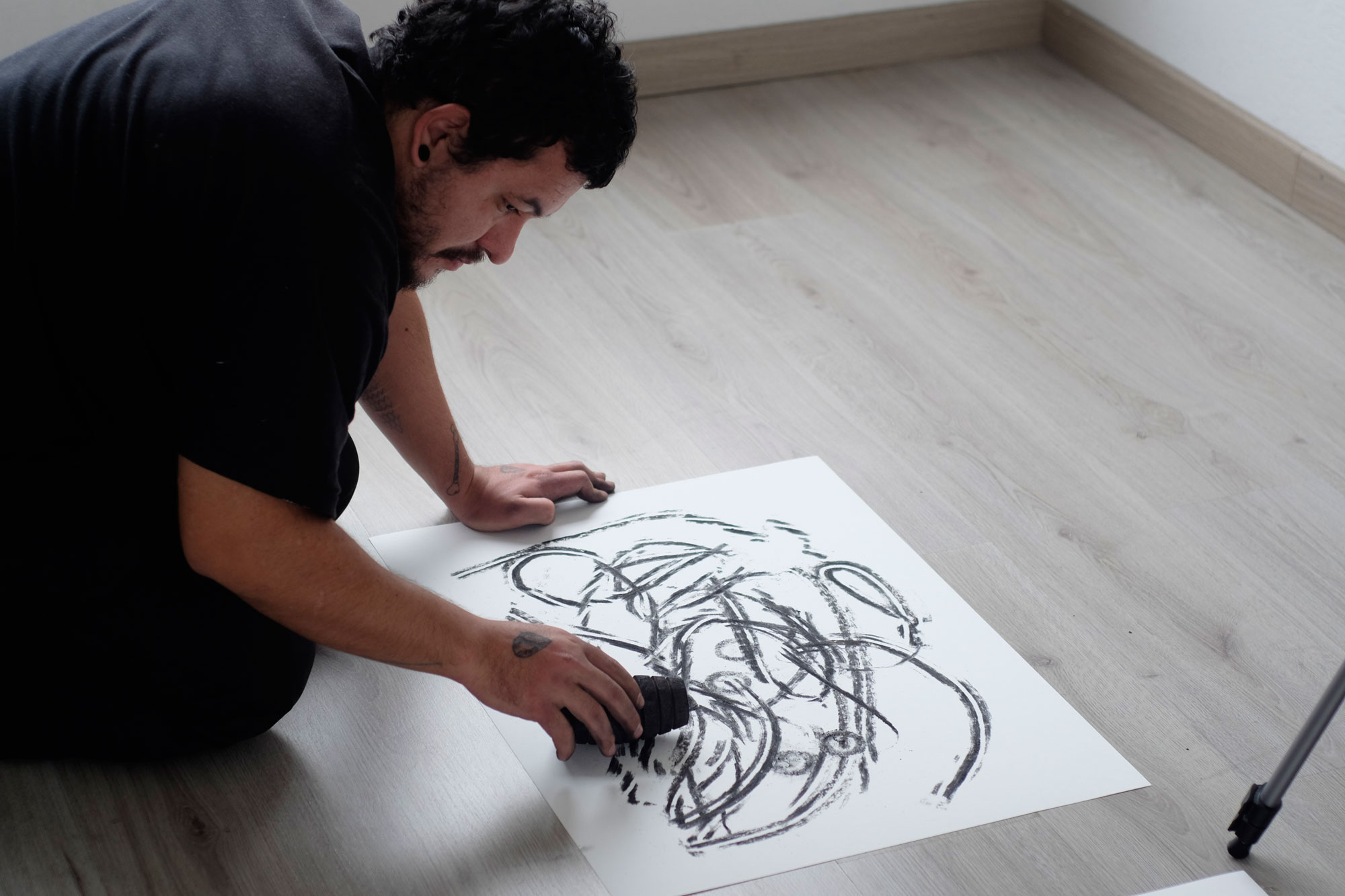Christian Salablanca Díaz
The work of Costa Rican artist Christian Salablanca Díaz focuses on the phenomena of violence and the ways in which it produces, determines, and conditions history, society, and politics. His production methods function as affective encounters and are concerned with territories and populations in Central and South America, and the Caribbean. Salablanca’s interdisciplinary works attempt to create a radical reflection on the cultural relations of violent systems: from the human to the animal, from the word to symbolic memory, and from the centres of power to the periphery.
Geometría del centro (Geometry of the Centre), 2020, emerged from a field trip Salablanca undertook in 2020, along with five artists and the team from FLORA ars+natura, to the Sierra Nevada de Santa Marta, a mountain range in northern Colombia that is home to the Kogui, Arhuaco, Wiwa, and Kankuamo peoples. The group visited the Terunna—an ancient ceremonial city also known as Ciudad Perdida, the lost city. This remote and uniquely spiritual place is formed by a series of stone terraces and circular plazas. Salablanca was struck by the similarities between this location and the mounds and foundations of the Guayabo Monument, a largely unexplored archaeological site in central Costa Rica.
Imagined as a “video poem” that integrates audio designs by the sound artist Daniel Lara Ballesteros as well as fragments of text, Geometría del centro (Geometry of the Centre) explores the formal and conceptual relationship between these two ancient places. It records the making of a series of drawings. These paper inscriptions take shape through the use of charcoal tools whose forms recall pillars or instruments for measurement, such as plumb bobs.
Do you want to learn more about the project?
st_age, is a digital platform launched by TBA21 as a response to the Covid-19 crisis to present newly produced works. It aims to offer refuge and support and at the same time to establish ground for discussion and collaboration between different disciplines and generations in order to build the foundations of a new cultural space.

